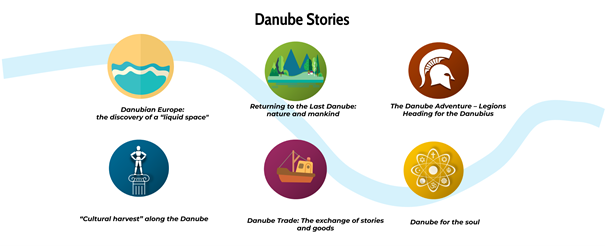|
Click on image, and read the full stories.
We shall discover “hidden places” and encounter contexts that not only make the history and culture of the Danube region accessible, but also elucidate our contemporary issues; contexts demonstrating that art and culture are not just for prestige, pomp and circumstance, but that beauty and sublimity have always contributed to making human life more tolerable, better and richer. All these contexts and phenomena will yield travel experiences that are worthy of the name. Sightseeing alone does not do justice. It’s about encounters, it’s about cuisine and music, it’s about people and customs; it’s about getting back to nature and sounding out multiple dimensions with all our senses. The Danube is neither a nature reserve nor a tourist leisure and pleasure ground. It is a living environment for people, and every journey should make this a palpable reality. It’s not about perfection but about improvisation. It’s about surprise and emotion, rather than quasi-industrial procedures that mass tourism tows in its wake every now and again.
The image of a symphony should always be our guide: forte and pianissimo, allegro and adagio, nature, culture, cuisine, architecture, folk culture, joie de vivre, but melancholy too, religion, and spirituality. The Danube is as many-faceted as its shades of blue.
|


